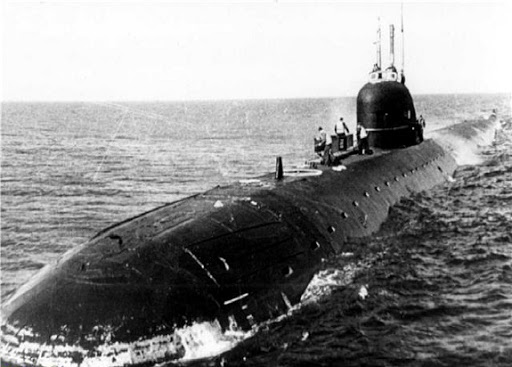
History 20/03/20 the Tragedy of the submarine K-27: why the killing of 9 Soviet sailors
This submarine managed to get in two trips and the third world, in may of 1968 K-27 accident of a nuclear reactor with liquid metal (lead-bismuth) coolant. What happened then, began to be widely discussed only in 90-e years – the submarine gave a subscription about nondisclosure of data about the crash on 25 – 30 years.
Two of campaign no problems
Former co-driver To-27 in the second crew Vladimir Naumov recalled that the submarine, commissioned in 1962, before disaster made two expeditions in 1964 and 1965. The first two-month trip at that time was a record for the Autonomous navigation of submarines. Both campaign took place in the Mediterranean. With LMC-reactor K-27 in comparison with other Soviet submarines were of high speed and maneuverability.
the Problems with the reactor with liquid metal coolant (it was tested on K-27 for the first time) in the first two campaigns was not. Vladlen Vasilievich thought a catastrophe was provoked by the failure of regeneration of the alloy of the coolant before the third campaign.
What happened on may 24, 1968
Naumov cites 127 submarine in the composition of the K-27 in the third campaign in the Barents sea. Former chief petty officer of the submarine V. N. Mazurenko says 144 sailors (on the boat were three more scientists-designers). Vyacheslav Nikolaevich has told that the accident occurred on the third day after the submarine at sea, the crew was pretty beat. The trip was to be a five-day test before the 70-day “submarine”.
According to Vladimir Naumov, the accident occurred in the twelfth hour of the day, according to estimates, due to clogging of the channels of one of two rectors of the slag or oxides of the coolant. Rector overheated, burned his channels, resulting in the end there was a release of radiation. The commander is not managed properly to assess the situation and hasn’t even declared a radiation hazard.
As he wrote in his book a member of the crew of the third trip To a-27 V. N. Mazurenko, in the first hours of the accident no one really understood what happened. The sailors saw that the needle of the dosimeter is off the charts. Only when they began to pull sailors from the reactor compartment (they could not go), the sailors guessed that disaster struck.
Boat popped up and went to the base Gremikha (base Sifflote of the Soviet Navy in Murmansk region), while commander P. F. Leonov was ordered to drift until further notice. At the approach to the basis of the work mounted on the pier of radiation dosimeters-Howler monkeys – exposure on the K-27 was prohibitive. Was declared alarm, boats from nearby marinas were evacuated.
the disaster
the Entire crew of the submarine was sent to the Leningrad hospital. According to the memoirs of V. N. Mazurenko, after the capture of the sailors gag order only the officers had the opportunity systematically to take a course of treatment, and enlisted personnel of the submarine after discharge from the hospital and demobilization of specoborudovanie no longer passed.
Pereobrazhennya was the entire crew of K-27, almost immediately killing all who were in the reactor compartment (9 people). According to Mazurenko, more than half of crew members affected by acute radiation sickness, to date, have already died from the effects of radiation exposure.
According to Vladimir Naumov, the-27 up to 1982 stood at the base in Gremikha, and then was dumped in the Kara sea at 30 meters depth (according to Mazurenko, 75-meter). The intent was to raise and dispose of nuclear submarines, but while this project is not implemented.
Nicholas Syromyatnikov
Source:
© Russian Seven
Featured articles Share: Comments Comments on the article “the Tragedy of submarine K-27: why the killing of 9 of the Soviet sailors” Please authority certificateswhites to leave a comment! br>
Share on Tumblr
















